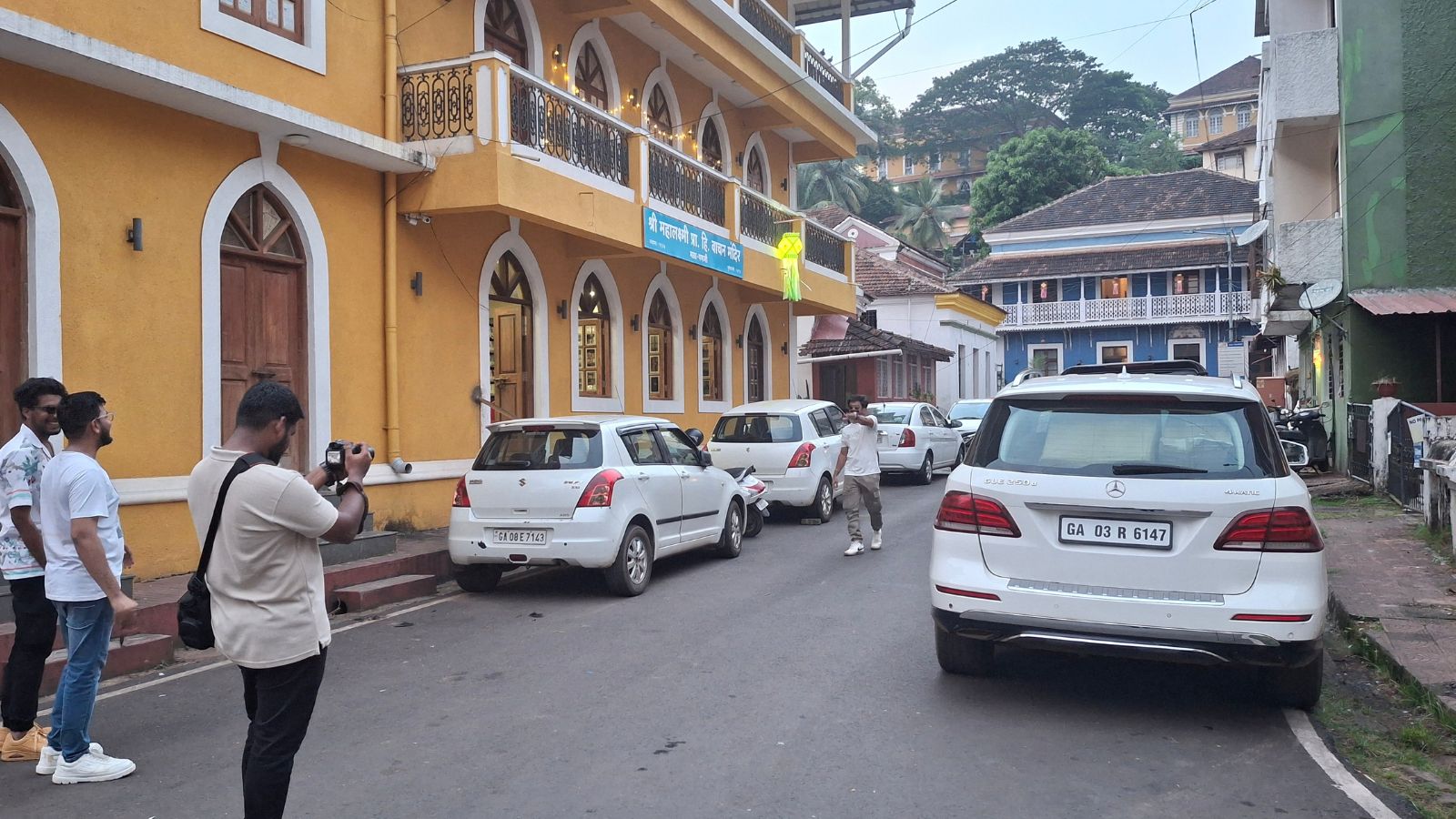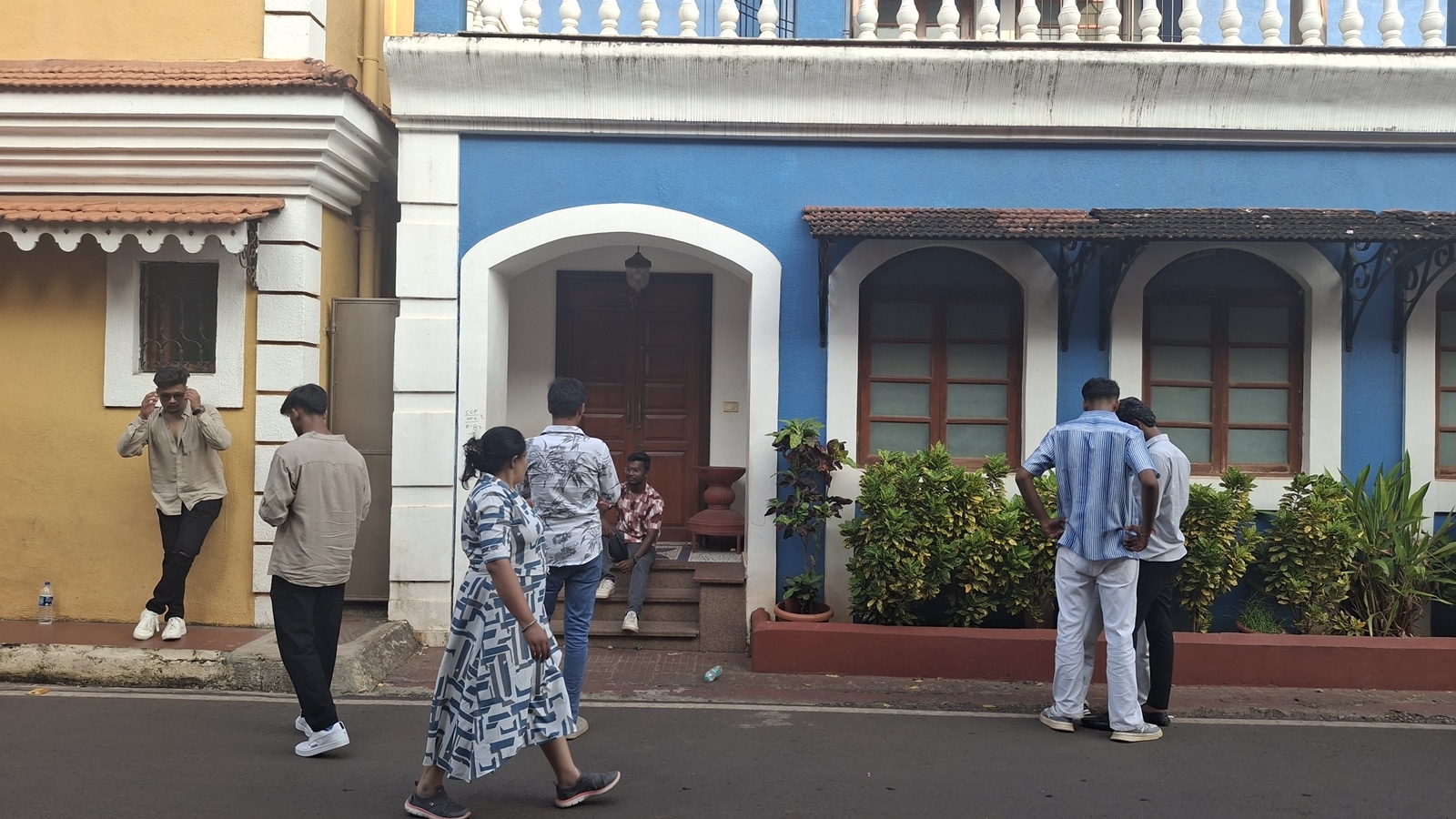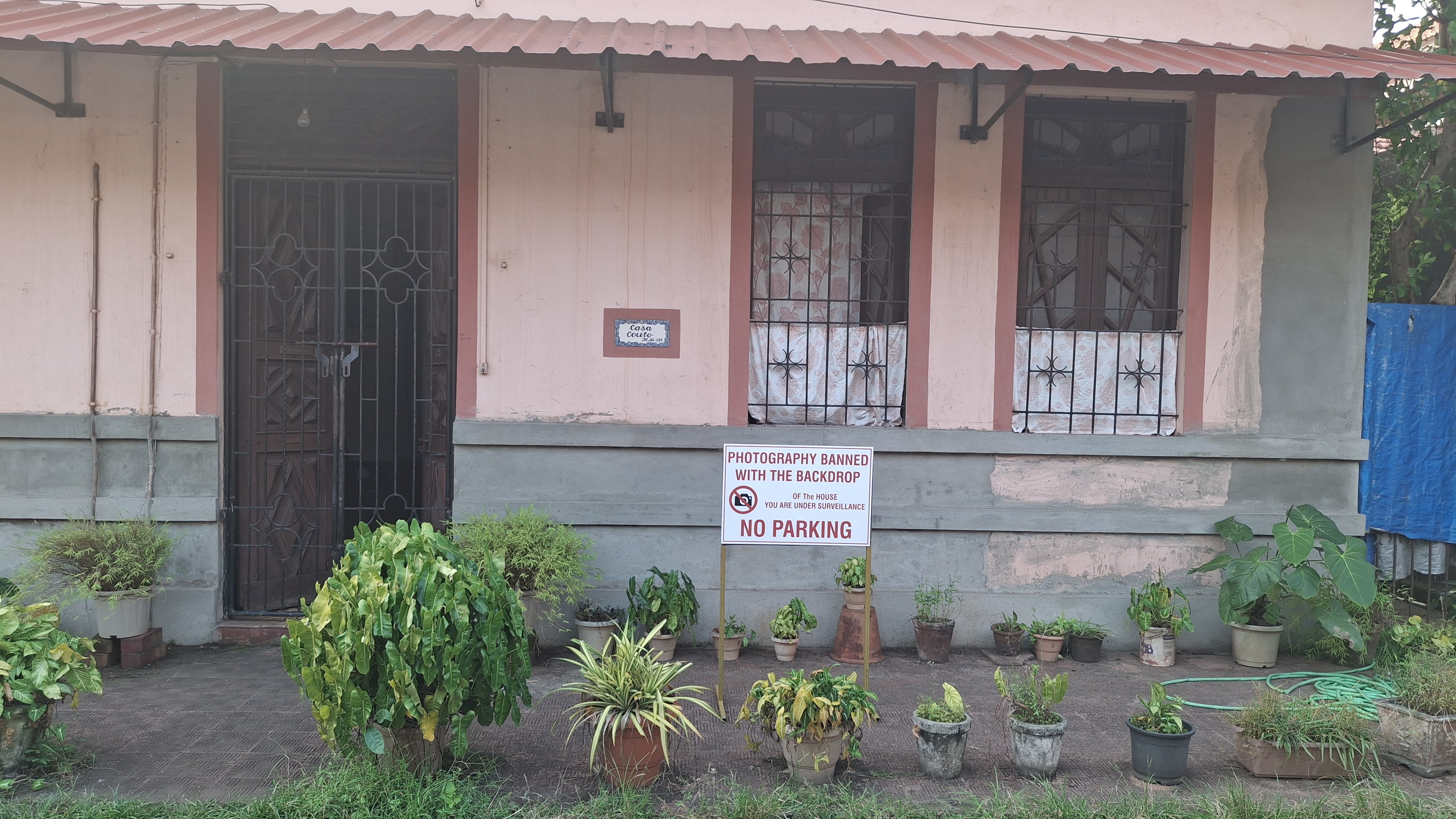‘It’s a nuisance’: In a picturesque Goan neighbourhood, residents have had enough of tourists
On a weekday evening, the residential neighbourhood of Fontainhas, which means ‘little fountain’ in Portuguese, is packed with tourists and their entourage of vloggers, YouTubers and camera crews — much to the chagrin of the locals.
 Tourists taking photos in a residential neighbourhood in Goa. (Express photo by Pavneet Singh Chadha)
Tourists taking photos in a residential neighbourhood in Goa. (Express photo by Pavneet Singh Chadha)“Photography banned with the backdrop of the house. You are under surveillance” — reads a board that has recently come up outside a house in the picturesque Fontainhas, located in the heart of Panaji’s heritage wards dubbed the Latin Quarter. Next to the board, a tourist couple is posing on the stairs of the facade of a house, passing instructions to a photographer for their pre-wedding shoot.
Nearby, outside St Sebastian Chapel, another board reads: “This is a chapel, a holy place! Photography banned with the backdrop of the chapel. Silence and decorum to be maintained.” As a group of tourists strike a pose in front of the chapel door, Nascimento D’ Silva, a local, rushes to shoo the group away. “Mass is going on. Please have some respect for our privacy,” he says.
 An argument over a photoshoot escalated last month in Sao Tome, when a resident threatened to hit a group of tourists with a stick. (Express photo by Pavneet Singh Chadha)
An argument over a photoshoot escalated last month in Sao Tome, when a resident threatened to hit a group of tourists with a stick. (Express photo by Pavneet Singh Chadha)
On a weekday evening, the residential neighbourhood of Fontainhas, which means ‘little fountain’ in Portuguese, is packed with tourists and their entourage of vloggers, YouTubers and camera crews — much to the chagrin of the locals. The narrow lanes in Fontainhas are dotted with Portuguese-style houses painted in pastel shades of blue, red, green and yellow that still retain the city’s colonial legacy.
Irked over their privacy being compromised “at the cost of invasive or mass tourism”, the residents of the heritage wards of Sao Tome and Fontainhas in the Goa capital have now sought the intervention of Rohit Monserrate, the mayor of the Corporation of the City of Panaji (CCP). Residents say that “a growing influx of tourists” and “unstructured and unregulated tourism activity” has transformed their quaint neighbourhoods into a “noisy and intrusive” experience for the residents, besides “destroying local ethos and cultural heritage” and “the peace in the Latin Quarter”.
 Tourists thronging a residential area in Goa. (Express photo by Pavneet Singh Chadha)
Tourists thronging a residential area in Goa. (Express photo by Pavneet Singh Chadha)
The residents complain that tourists — armed with cameras and tripods — start arriving in the neighbourhoods as early as 5.30 am for pre- and post-wedding, and commercial shoots. Some barge inside the gates and verandas of homes, peep through the windows, climb up the stairs and even damage properties – “all for one minute of glory on social media or a selfie”.
“My house is not a public monument,” says Aloo Gomes Pereira, a resident of Sao Tome.
An argument over a photoshoot escalated last month in Sao Tome, when a resident threatened to hit a group of tourists with a stick. Two policemen were deployed in the area after the altercation.
 Lucia Couto, a resident of Fontainhas, says, “It is strange to see 40 people constantly aiming a camera at my door. Where is our privacy?” (Express photo by Pavneet Singh Chadha)
Lucia Couto, a resident of Fontainhas, says, “It is strange to see 40 people constantly aiming a camera at my door. Where is our privacy?” (Express photo by Pavneet Singh Chadha)
Pereira, who was involved in that melee, says, “This is an invasion of our privacy. What gives a tourist the right to barge into my house and click a photo, and put it on social media? They come in big groups and make noise all day. These are residential wards where a lot of elderly people live. When tourists initially started coming, we thought ‘a few are just roaming around’ and there was no objection. It’s a nuisance now. This has to end.”
Lucia Couto, a resident of Fontainhas, says she keeps the windows of her house permanently shut. “Tourists say they like the colourful backdrop of the houses. My children are unable to study due to the constant noise. It is strange to see 40 people constantly aiming a camera at my door. Where is our privacy?” she says, adding that her family has decided against painting the walls of their house — an annual tradition in the area mandated by law during the erstwhile Portuguese rule.
Though Panaji has always had a large influx of tourists, Sao Tome and Fontainhas have become an integral part of tourists’ itinerary over the past few years, especially since the pandemic. The residents blame content creators for popularising these areas on social media. The area is lined with cafes, old taverns, bars, restaurants and bakeries and in recent years, guided walking tours are also adding to the footfall.
Pereira, who has worked in the tourism sector for several decades, says, “This parasitical attitude of the tourists is creating an anti-tourist sentiment (in the area). The residents cannot take this pressure. Recently, in Barcelona, there were demonstrations by locals, where tourists were sprayed with water pistols. We are not saying that we don’t want tourists — Goa needs tourism and many livelihoods are dependent on the industry — but tourism has to be controlled. Come for our culture, learn about our heritage… not just for Instagram.”
It is believed that Fontainhas derived its name from Fonte Phoenix, a natural spring located at the bottom of the nearby Altinho Hill. “But these tourists don’t visit the spring and are not aware of it,” says Pereira.
Clifton Afonso, a guest house owner in Fontainhas, says a majority of tourists visiting the neighbourhood are not interested in exploring the area’s culture, architecture or history.
“They just want a photo for social media. People are filming with drones. Who knows what is being filmed? The authorities have to levy stringent fines to curb this behaviour,” he says.
In a letter to the Mayor, the residents also called for deployment of tourist police to monitor “anti-social activities” and a ban on entry of tourist vehicles in the area.
CCP Mayor Rohit Monserrate says residents have apprised him of their concerns and the department is looking to find a resolution in coordination with all stakeholders, including the Tourism Department and the police. “Drone shoots start at 5.30 am and it’s all for Instagram. It’s not like these tourists contribute to the local area. A lot of them don’t even frequent the businesses. They come, litter, make noise and leave,” he says.
“If people walk into someone’s house, it’s a safety issue… People complain that tourists are generally rude. They don’t really understand that people live there. They (tourists) think it’s some sort of a movie set where they can just walk into the homes. It is horrible… Many residents in these areas are retired senior citizens and their children have either moved elsewhere in Goa or abroad. People are shoving their phones inside their houses, so (for the residents) it’s a bit like when you go to a zoo,” he adds.
 A board requesting silence and decorum outside St Sebastian Chapel. (Express photo by Pavneet Singh Chadha)
A board requesting silence and decorum outside St Sebastian Chapel. (Express photo by Pavneet Singh Chadha)
A police personnel posted in Sao Tome tells The Indian Express, “Can we stop people from taking pictures on a public road? We are sensitising tourists, but often they do not pay heed to these instructions.”
Mayor Monserrate acknowledges that there are limitations in terms of what the authorities can impose. “You cannot stop anyone from taking a picture of a house in a public area. It’s a free country. For the government to say ‘don’t come to that area’ is not constitutionally correct also. Tourists are a nuisance, but it’s not a law-and-order situation per se. For instance, when these same tourists travel to another country, they are aware that this behaviour is not acceptable, but when they come here, they think it’s okay,” he says.
To address the problems due to over tourism in Bali, he says, the authorities there have deployed wardens to enforce certain behaviours to sensitise tourists.
Antonieta Fernandes, a senior citizen, says she is contemplating putting up a new board with the words, “Respect our privacy, or you are not welcome”.
“No one understands polite language”, she says.
Pereira jokes, “I am planning to buy a water gun to shoo away tourists.”







